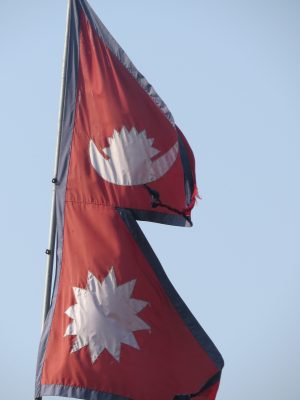China and Nepal are poised to resume defense cooperation after a long suspension due to the COVID-19 pandemic. During Chinese Defense Minister Wei Fenghe’s visit to Kathmandu on November 29, the two sides agreed on restarting various student exchange and training programs. Beijing will also be resuming supply of “various non-lethal military aid” to Kathmandu.
Wei is the highest Chinese government functionary to visit Nepal since President Xi Jinping visited the Himalayan nation in October last year. Wei’s visit came close on the heels of Indian Foreign Secretary Harsh Vardhan Shringla’s visit to Kathmandu on November 26-27. The latter was widely seen in India as signaling a significant improvement in India-Nepal relations.
India-Nepal relations have frayed seriously over the past year and it is only over the past two or so months that relations have begun to improve somewhat, as evidenced by a string of high-profile visits by Indian officials, including Samant Goel, chief of India’s external intelligence agency, the Research and Analysis Wing, and Indian Army chief General Manoj Mukund Navarane. Shringla’s visit is part of an intensified Indian effort to mend fences with its strategically located northern neighbor. Importantly, these visits were aimed at reclaiming lost influence in Nepal.
Landlocked Nepal is sandwiched between India and China, and while it is with India that Kathmandu has been closest historically, China has rapidly emerged as its preferred partner in recent years. An economic blockade imposed by Nepali Madhesi activists along the India-Nepal border in 2015, which was widely believed to have had unofficial Indian support, brought enormous hardship to the Nepali people.
This triggered an unprecedented wave of anti-India sentiment in the Himalayan country, and prompted Nepal to reach out to China to reduce its dependence on India. China’s robust response to that outreach has led to an expanded Chinese presence in Nepal. Chinese investment in connectivity projects under the Belt and Road Initiative has grown.
China’s growing role in Nepal has also reduced the latter’s dependence on India. With Sino-Nepalese overland connectivity improving and Nepal now having access to several Chinese sea and land ports for trade with a third country, New Delhi’s leverage over Nepal has reduced sharply. Additionally, India is concerned as several of the Chinese infrastructure projects in Nepal have implications for India’s security. China has begun work on a railway line linking Lhasa with Kathmandu and onward to Lumbini, near the Nepal-India border.
Most worrying for India is Beijing’s mounting role in Nepal’s domestic politics. If in the past it was Indian officials who made and unmade coalitions and governments, now it is China that is playing that role.
Intervention by the Chinese Embassy in Nepalese politics has grown in recent years. In May 2018, it brought together the Communist Party of Nepal-United Marxist Leninist (CPN-UML) and the Maoist Centre to form the Nepal Communist Party (NCP). Consequently, it wields considerable influence over the NCP government.
In fact, China’s ambassador in Kathmandu, Hou Yanqi, is said to enjoy direct access to Nepali officials and leaders, including President Bidhya Devi Bhandari, Prime Minister and NCP Chairman K P Sharma Oli and co-chair Pushpa Kamal Dahal. Reports of Hou’s influence have raised eyebrows in Nepal and India.
Over the past year, Hou has repeatedly intervened in the ongoing intra-party fighting in the NCP. She has met Oli, Dahalm and other leaders in a bid to get them to reach a compromise to prevent the government from collapse. Apparently, Beijing has no preferences in the NCP infighting and is not backing any leader in particular; it simply wants the NCP to remain in power.
Oli has taken increasingly hostile positions vis-à-vis India since early this year. He accused India of encroaching into a sliver of disputed territory in the Lipulekh-Kalapani-Limpiyadhura area, had Nepal’s maps altered to show this territory to be part of Nepal, and even got the constitution amended to make the new map official. Some believe that this was done at China’s behest.
Meanwhile, much to India’s chagrin, Oli has dismissed opposition allegations that China has encroached upon Nepali territory in the Humla district.
Thus over the past year, Oli has been busy not only with fighting off challenges to his leadership from his rivals in the NCP but also with tilting Nepal’s foreign policy more markedly in China’s favor. However, he appears to be responding positively to India’s overtures of late, paving the way for the high-level visits from New Delhi.
Shringla’s visit signals that the frost that had crept into India-Nepal relations might be thawing. But New Delhi’s influence in Kathmandu is nowhere near what it was pre-2015. It has a lot of ground to cover to match China, which is unlikely to weaken its grip over Nepal.

































